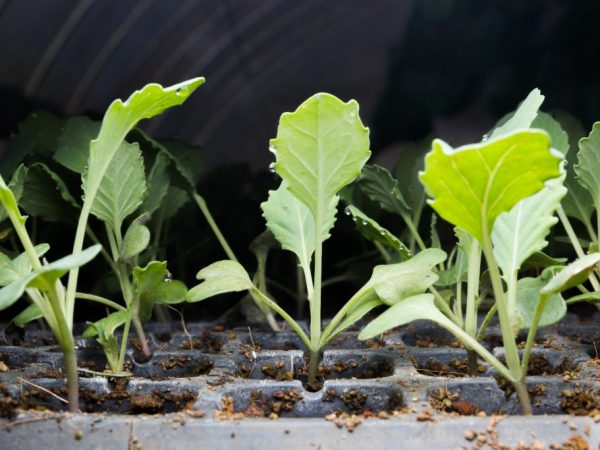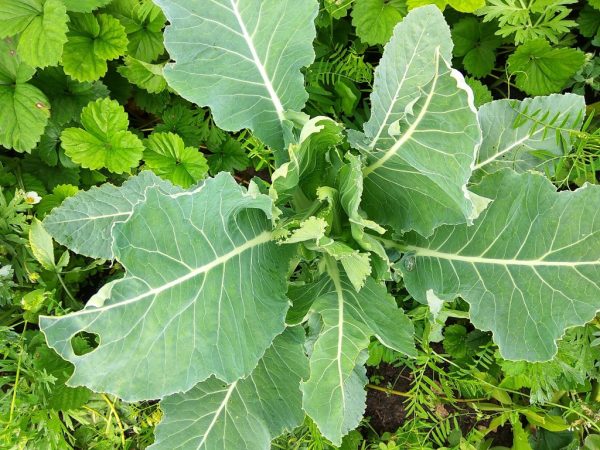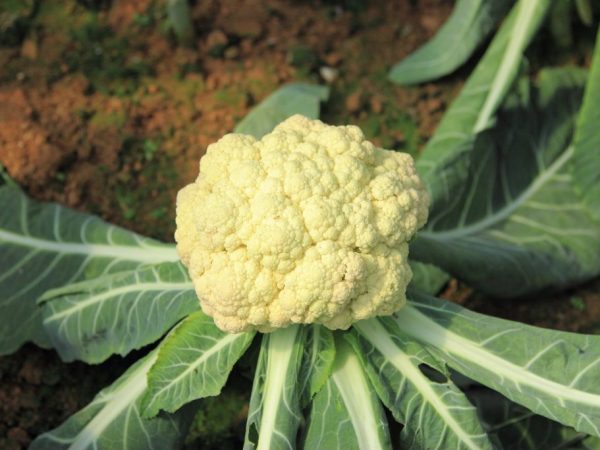Planting cauliflower seedlings
In order to get a good harvest, planting of cauliflower for seedlings must take place at a certain time. It is allowed to grow it in different periods.

Planting cauliflower seedlings
Sowing seeds
It is necessary to sow cauliflower for seedlings at home to a depth of 5-7 cm and at a distance of 1 cm from each other. The soil for sowing cauliflower for seedlings is chosen mainly from peat. After that, it is watered and mulched with dry sand. The temperature regime is 20-25 ° C. Before planting cauliflower for seedlings, the seeds are treated for diseases and pests.
Sowing dates for cauliflower seedlings:
- the first - from 15 to 20 March;
- the second - from March 30 to April 10;
- the third - from April 25 to May 10.
For growing seedlings of late varieties of cauliflower, seeds are sown from 5 to 15 June.
Cauliflower Seedling Care
Correctly growing cauliflower seedlings at home will help precise temperature control and crop care. Seedlings begin to rise in greenhouses at 20 ° C 4-5 days after sowing.
After they appear, a temperature difference is needed: the first time it is reduced to 7 ° C for a period of 4 to 5 days, and the second time it is raised to 15 ° C. Such jumps will not allow sunrises to stretch too far.
Care is divided into several stages. The process of growing seedlings from seeds takes about a month on average.
Dive
If you plan to grow early varieties, you need to dive seedlings. This process involves transplanting seedlings from a common container into separate small containers.
At the age of 8-10 days after planting, when the first true leaves began to appear, the seedlings dive. Peat boxes are ideal for this process.
A few days before this procedure, 10 g of ammonium nitrate are placed in pots, then wood sawdust is added. The mixture that is used when transplanting into separate containers is made from the following components:
- double granular superphosphate - 12 g;
- lime - 25 g;
- ammonium nitrate - 10 g;
- potassium nitrate - 5 g;
Ammonium and potassium nitrate is preliminarily diluted with water. The consistency of the mixture should not disintegrate in the hands, it should have sufficient density.
After the completion of the dive, the soil in the pots is moderately moistened so that the seedlings do not get sick. Picking is not a mandatory process, but it has a number of advantages:
- the old soil is replaced with fresh;
- increase the area of plant nutrition;
- remove weak and diseased seedlings;
- prevent the problem of dense crops;
- save the sown area.
Seedlings can also be dived into open ground, after removing weak and diseased shoots. During the day, the planted seedlings should be protected from direct sunlight and watered abundantly for the first 3-5 days.
Hardening

Preparing for disembarkation
Before planting in open ground, it is better to temper the sprouts to possible cold and sunlight. 3-5 days before transplanting to the garden, the seedlings are moved to a cold greenhouse.If frost is expected, it is not recommended to open it overnight.
Top dressing
During the growth period, the culture is fed 1-4 times. The first top dressing is applied 8-10 days after the pick, if the seedlings are not dived, then when the second true leaf appears. When feeding, a solution is used for the first time: 10 g of urea, 20 g of superphosphate, 10 g of potassium fertilizers are taken for 10 liters of water.
The second feeding is carried out 7-10 days after the first. The second feeding for 10 liters of water requires 15 g of urea, 30 g of superphosphate, 20 g of potassium fertilizers.
It is necessary to feed it for the third time - after about 10 days, adding the following trace elements: copper sulfate, magnesium sulfate, boric acid. After each top dressing, careful watering is required, after which the soil is loosened and hilled.
Disembarkation
The early varieties are grown in mid-May, the late ones at the end of June or July, as they require a larger area due to bushiness.
Cauliflower seedlings are planted in the garden with different distances between plants. It depends on the variety. Too dense planting is undesirable: the heads will turn out to be small. Planting holes are made with a scoop.
In order to properly grow cauliflower seedlings, when planting, try not to fill the upper bud. The land near the plant is pressed and watered abundantly. Sprinkle the watering area with dry soil: this prevents the formation of unnecessary crust. Early cauliflower seedlings are planted shallow in heated soil to accelerate root growth.
- Before planting, the seedlings are sprayed with water and sprinkled with tobacco dust or pyrethrum (as a prevention of this type of fly).
- Seedlings planted in early spring are afraid of frost. Bushes planted before mid-May are wrapped in a transparent film or cover the entire garden bed.
In this way, the ripening of the crop can be brought closer by 7-10 days. The cover is removed 12-15 days after planting, then short-term frosts of seedlings are no longer scary. For better heating of the soil, the seedlings are sprinkled with ash, having previously kept it for at least six months.
In order for cauliflower seedlings to grow well, they need additional care - protection from pests and diseases.
Diseases
Black leg, or root rot of seedlings, is a common fungal disease that affects seedlings from the moment the seeds germinate until 2-3 true leaves appear on the sprout. When a fungus is affected, a black constriction appears at the bottom of the plant, and the root collar begins to turn black. Only 4-6 days of being in high humidity leads to softening and fragility of the diseased stem, in this case the sprouts die. The main route of entry is through the ground.
Also contributes to the spread of blackleg:
- thickened sowing;
- poor ventilation;
- sudden changes in temperature;
- high humidity.
Rot of the root collar appears on weakened shoots. This attack is not cured, but the selection of high-quality seeds or more resistant varieties to the disease helps to prevent it.
Prophylaxis

Proper care yields an excellent harvest
Preventive measures for cauliflower seedlings:
- steaming the soil before sowing;
- disinfection of soil for sowing with a solution of 3 g of potassium permanganate per 10 l of water, the drug "Trichodermin" is also used;
- seed treatment with a fungicide before planting;
- seed treatment with drugs that stimulate the immune system of plants;
- sprinkling the soil with calcined sand after planting and picking;
- temperature control after watering;
- destruction of infected plants at the first sign of disease.
Pests
Young broccoli sprouts affect not only diseases, but also pests. Insects destroy young as well as adult plants. Among them:
- Bedbugs. These parasites, piercing the skin, draw life juice from the plant. When affected by bedbugs, wounds are clearly visible on the leaves, which subsequently replace yellow spots. The plant withers and stops growing.If there are more than 2 bugs on the sprout, treatment should be started immediately. It is recommended to weed the seedling beds, and to treat the affected plants with an insecticide.
- Fleas. These parasites make labyrinths of holes in young leaves. Infected seedlings dry out and die. For prevention purposes, weeds should be removed regularly, and on hot days, cover it with a special non-woven material. Having found a flea, the treatment is carried out with chemicals.
- Caterpillars. Caterpillars can be exterminated using a decoction based on tomato tops (2 tbsp ash, laundry soap and 10 liters of water).
- Stem hidden proboscis. The larvae of this beetle gnaw holes from the stem to the roots. Without the intake of nutrients, the leaves slow down natural growth. If a pest is found, the infected seedlings are thrown away, and the soil is dug up and the holes are leveled.
- Cabbage fly. The larvae of these flies fall into the roots, which eventually rot, the plant dies. Treating sprouts from flies begins with the darkening of the lower leaves with the help of chemicals from dangerous pests.
Conclusion
Seedlings of cauliflower are planted at home quite easily. Timely preventive measures make it possible to grow a good harvest better: sprouts affected by diseases and pests must be destroyed. Be sure to observe the temperature and planting conditions.

